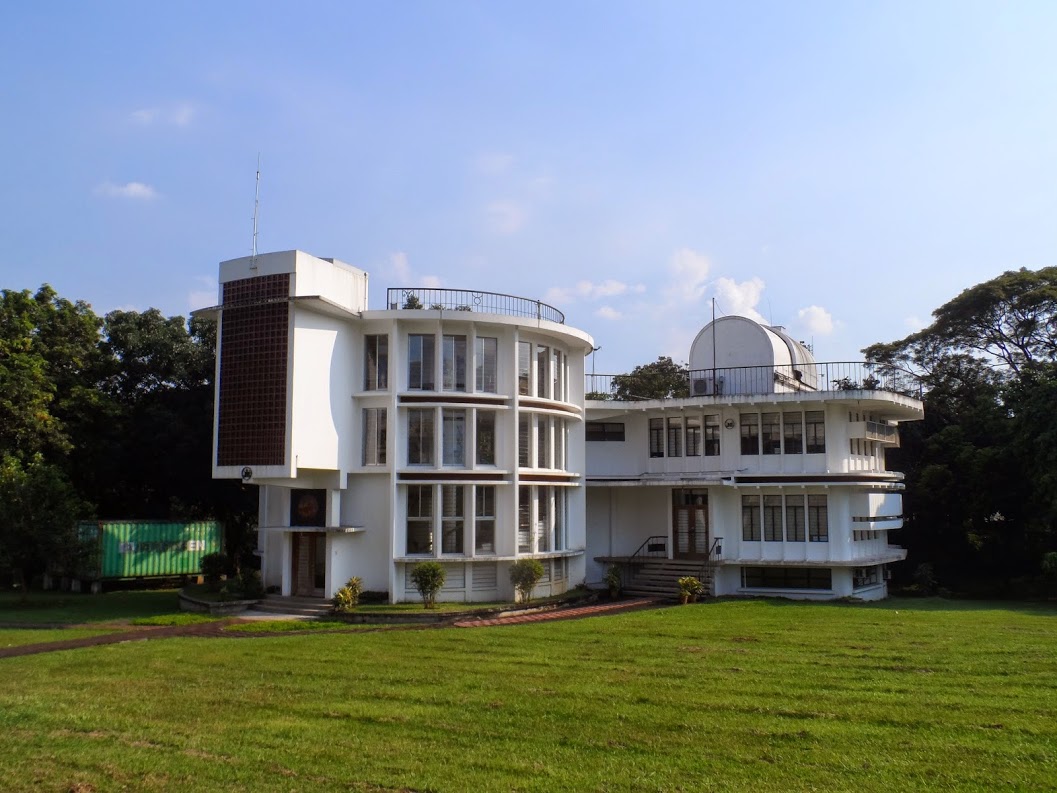Manila Observatory’s Solar Building
by Angel Hidalgo, S.J. and Victor Badillo, S.J.[1]
Before picturing the personality and labors of who may be considered the true founder of the Manila Observatory–the private Institution now maintaining its more than centenary existence, with the same ideals giving it life–we will present a rapid historical scheme as a setting of the vicissitudes through which the Observatory has passed during its years of existence.
The History of the Observatory may be divided into well defined stages.
A. Founding Stage: Observatorio del Ateneo Municipal (1865-1884)
Father Faura belongs to the founding stage which runs from 1865 to 1884. In this period of 20 years the Observatory is known under the name of “Observatorio del Ateneo Municipal“. During this period the Institution is supported by the School, the Jesuit Mission and the generous donations of benefactors interested in the enterprise. In charge of the work began are the Science professors of the Ateneo, who, with their students, embraced the supplementary task of annotating and publishing the meteorological observations, taking time from their rest and vacation.
B. Second Stage: Observatorio Meteorológico de Manila (1884-1899)
The second stage begins in 1884 with the Royal Decree of April, creating the Servicio Meteorológico (Meteorological Service), under the direction of the Ateneo Observatory, which from then on shall be named Observatorio Meteorológico de Manila (Meteorological Observatory of Manila). Another Royal Decree of September of the same year made Father Faura the director of the new Service, and Fr. José Murgadas the subdirector. It is funded by the State and included three sections: meteorological, magnetic and seismic. It is served by 14 secondary stations in Luzon under the charge of the personnel of the Telegraphic Service who would send to the Observatory the daily meteorological reports. This stage of the Observatory ends with the happenings of 1898 that transferred the government of the Philippines from Spanish to American sovereignty.
C. Third Stage: Oficina Meteorológica (1899-1945)
Begins the third stage under the provisional military authority, ruling the Philippines from 1899 to 1901, to give way on this date to the Commission Government which took charge of the Civil Administration of the Archipelago.
The reorganization law of the Meteorological Service of 1901 did not distinguish Sections nor Departments. Wit the title of Oficina Meteorológica or Weather Bureau–and the convenient personnel (a Director, 3 Subdirectors and one subaltern), it manages the four Departments thereof. Besides, it had 50 secondary stations with their own personnel.[2]
This period ran until the World War of 1939-1945. As a consequence of the conflict, the Observatory had the same fate as the City of Manila: its total destruction, which its third Director, Fr. Miguel Selga, records vividly in his six articles in Iberica. under the title of “Tragico fin del Observatorio de Manila” (the tragic end of the Manila Observatory).
D. Fourth Stage: Present
The fourth stage, the present, began after the war in 1945. Its initiator is Fr. Charles Deppermann, the true restorer of the Manila Observatory, and inspiring factor of the new orientation, in consonance with the deep changes and scientific advance in the post-war life in this part of the Far East.
Co-workers of Fr. Deppermann since the beginning were Fathers Bernard Doucette and James Hennessey. The first instruments were installed in the Observatory (Mirador) of Baguio, giving preference to ionospheric, seismic, solar and magnetic observations.
Then with the new transfer of the Manila Observatory to Loyola Heights, its Sections were in time completed increasing at the same time their respective specialized personnel for each Section. Fathers Richard Miller, Francisco Glover, Sergio Su and Victor Badillo became members of the group of collaborators of the Observatory. Later on came to the Solar Department the former Director of the Astronomical Observatory of Georgetown, USA, Fr. Francis Heyden, S.J. The subaltern stations of Baguio, Davao and Balará (Q.C.) are dependents of the Manila Observatory.
Now as before, the Manila Observatory is still a private Institution, supported by the Philippine Province of the Society of Jesus, with the contribution of some generous people and eventual subsidies of corporations interested in the work of the Observatory.
Such is the brief history of the Institution which began in 1865 with the observation of Fr. Francisco Colina in the Ateneo at Intramuros, Manila, and consolidated later on with total dedication to work by Father Faura.
Editor’s Notes:
[1] The article was obtained from Catalogue of the Publications of the Manila Observatory Personnel by Angel Hidalgo, S.J. and Victor Badillo, S.J. (Quezon City, 1980), pp. 3-5. The subheadings were added for clarity.
[2] The actual text reads oficina and not Oficina. But since Bureau starts with a capital letter, most likely oficina should really be Oficina.

